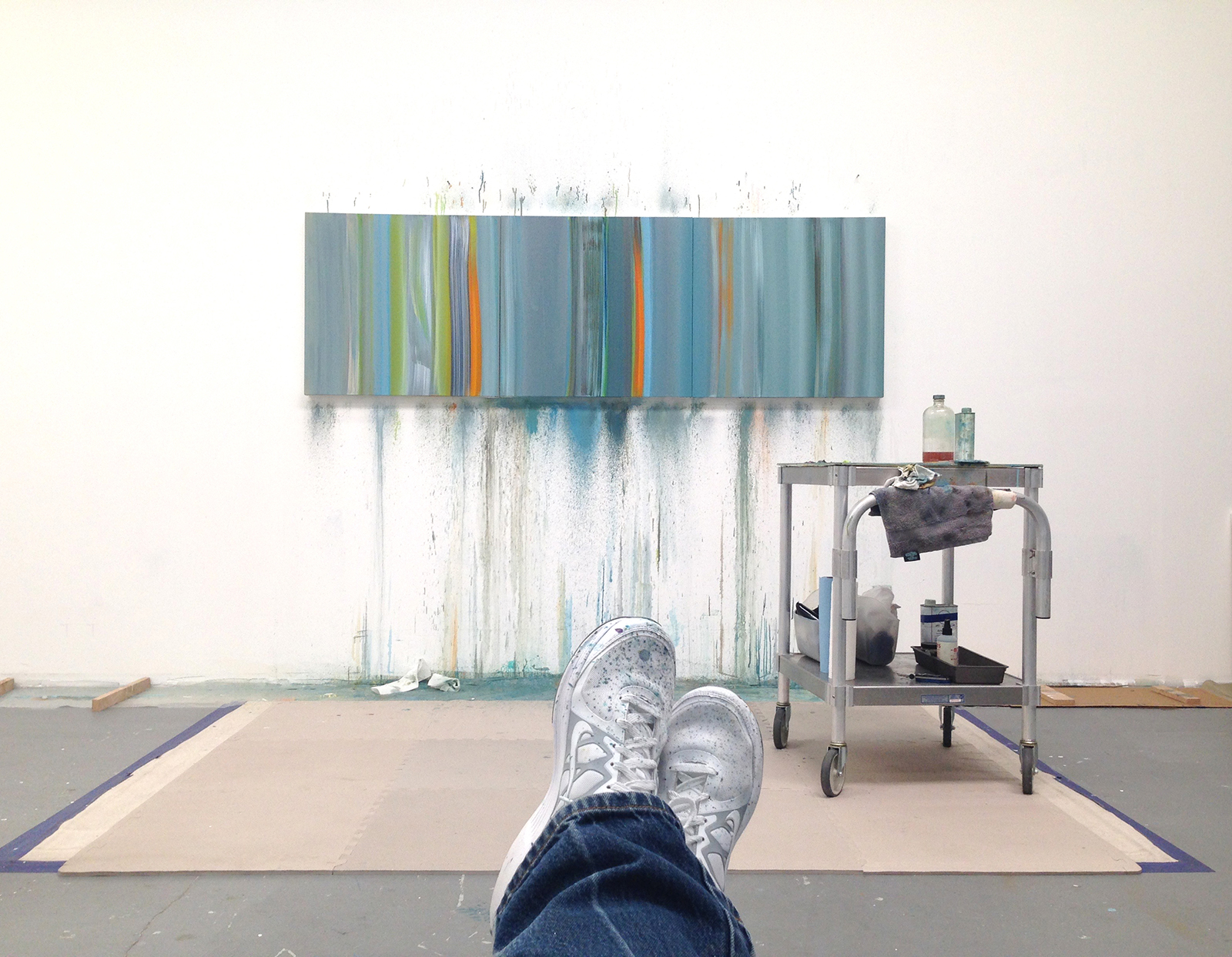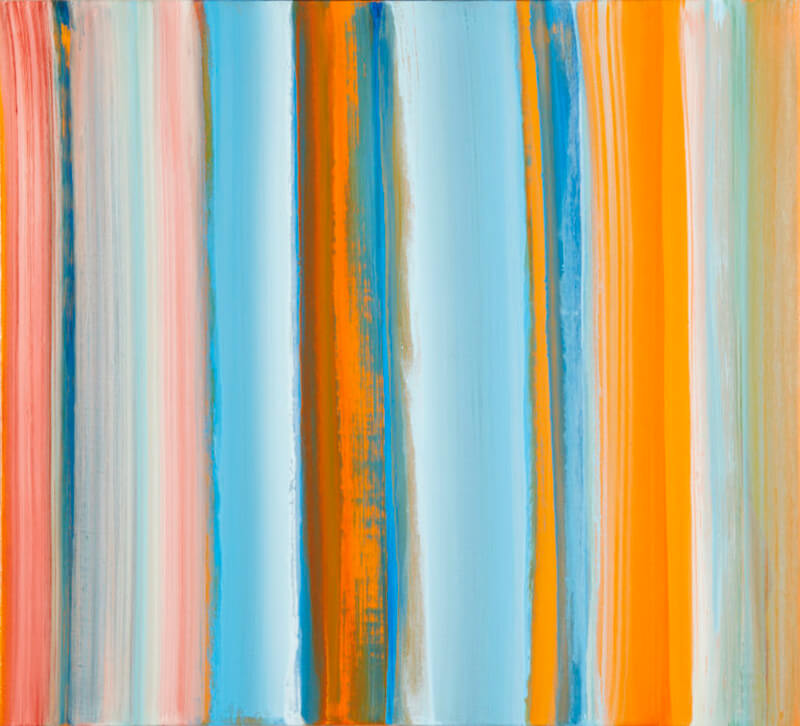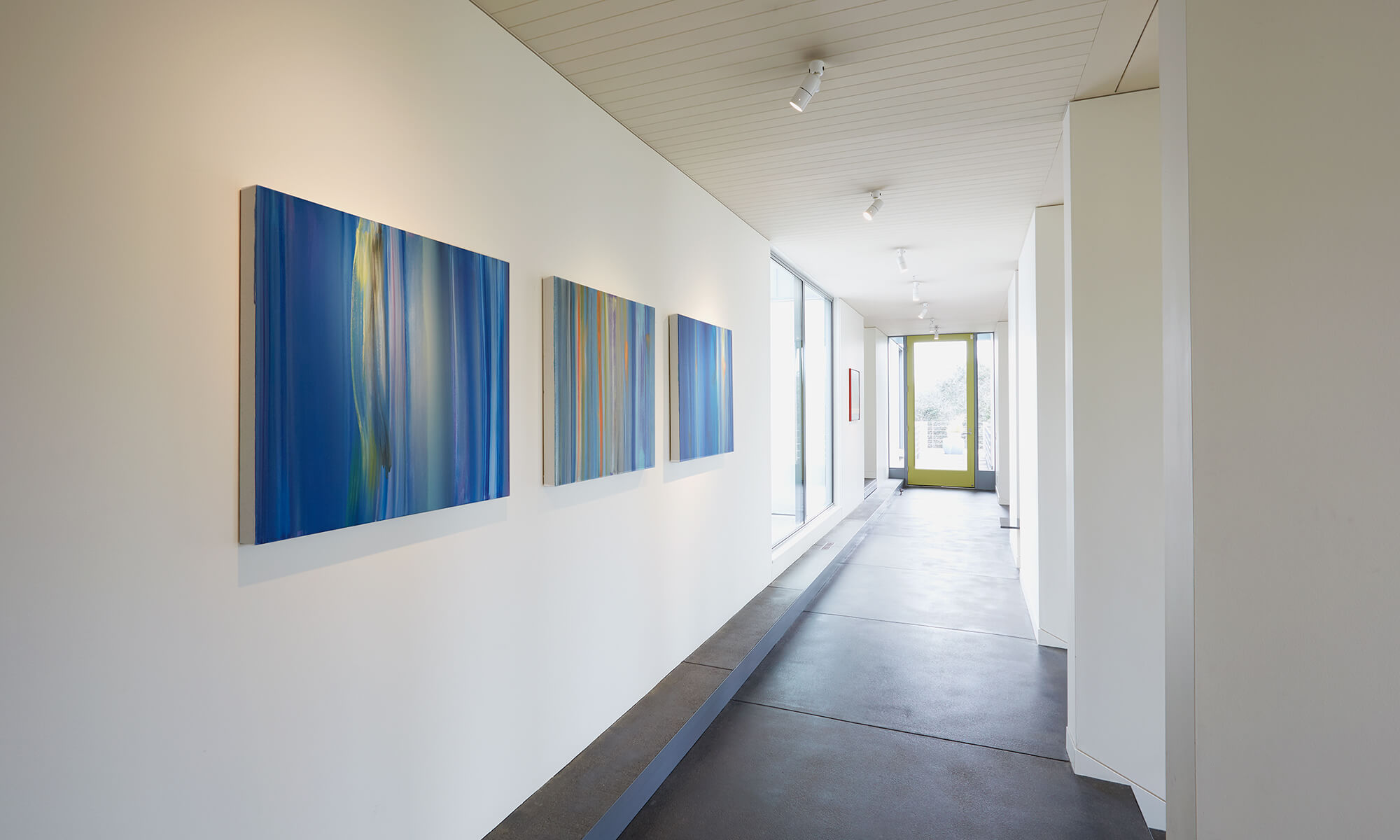Painting, Doritos and Color Theory
by Katy Crocker
Over two decades ago Santa Fe artist Willy Bo Richardson drove down highway 71 in Austin. As a painter consumed with his practice, he considered color. The blacktop road burst with light intermittently, revealing the yellow stripes on the street in the night. Time passed and Willy realized he was going the wrong way in relation to his destination. In the midst of this experience, he stopped at a gas station to reorient. As if by magnetism, he was pulled towards a bag of Doritos. The red and blue bag of Doritos served as a source of discovery, with a yellow chip inside.
This experience led him to the concept that red and blue make yellow. Forget logic, this was a philosophical exercise. Time passed, and yet another “ah-ha moment” showed the artist, via the visible light spectrum, that in fact yellow lies between red and blue, which became a theoretical platform for the artist and reconciled the “Doritos-moment.”
Discovering where a color like yellow comes from, and its relation to other colors would inform the artist’s paintings into the future.

oil on canvas⠀
29 x 93 inches⠀

Vertical lines, which serve as formal strictures for Willy’s work, allow color to excel. The lines are the control group, and the color is then free to variably play. I liken verticality to the depth of human experience, whereas horizontal lines indicate the passage of time.
I would be delighted to find everyday objects, upon dissection, revealed compositions like “Three Stages Number One,” or “Walkyries Number Three.” Willy’s paintings look through life experiences to an internal truth—similar to the position of yellow within the color spectrum, or the space that exists between the tiniest particles making up our material world.

“Three Muses, 2011” will be featured in “70 Years of Abstract Painting – Excerpts,” exhibiting at Jason McCoy Gallery in New York, April 6 – May 20. Other artists in the exhibition include Hans Hofmann, Jackson Pollock, and Josef Albers, among others.


2 Replies to “The End of Being: Painting, Doritos and Color Theory”